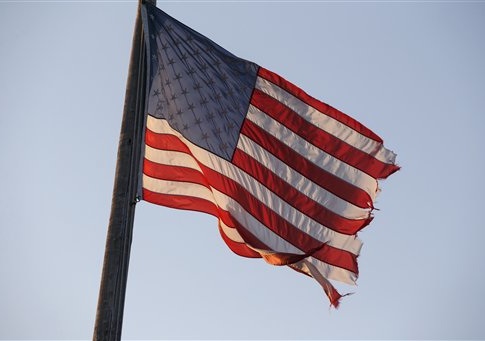Permanence may be the illusion of every age, but predictions are hard, and so history is littered with Paul Ehrlichs and Harold Campings whose premonitions of apocalypse fail to come true. Yet one does also see the occasional Cassandra, whose warnings go unheeded until too late. It thus seems understandable that James Piereson, president of the William E. Simon Foundation and senior fellow at the Manhattan Institute, hedges his bets in Shattered Consensus: The Rise and Decline of America’s Postwar Political Order, his new book about the imminent collapse of the political order that has dominated America since World War II. Instead of telling us when and how this order will collapse, he tells us it simply must, and explains why.
Piereson identifies for his readers a historical pattern: since the Founding, "the political economy of American capitalism has evolved in three distinct chapters." These are the "Jefferson-Jacksonian Era" of mounting conflict over slavery from 1800-1860, the "capitalist-industrialist era" of laissez-faire from 1865 to 1930, and the "postwar welfare state" that emerged in the 1930s and ’40s.
The last of these is, in Piereson’s reckoning, nearing its end. Our era awaits only a crisis on the magnitude of the Civil War or the Great Depression to usher in its successor, an age that will be characterized by political and cultural traits dramatically different from our own.
Though the initial appeal of Piereson’s theory comes from the intriguing regularity of these "regime changes" in American history—they arrive roughly every 70 years—Piereson knows that history is not a metronome. But his wide-ranging observations on the senescence and decadence of some of the fundamental aspects of our postwar welfare state will force the reader to think.
Consider economics, or higher education. Our Keynesian economic infrastructure has become less tenable because "Keynesian spending policies may in fact encourage the formation of distributional coalitions that eventually render those policies less effective," straining the political relationship "between influential rent-seeking groups and those who are compelled to fund their benefits." Our academic infrastructure, an essential tool to enforce the liberal consensus, has in the past 50 years "gone through a democratizing revolution, with the result that more students are being sold an increasingly expensive product that neither their professors nor the deans and presidents of their colleges can even begin to define."
Piereson covers a lot of ground in his analysis, describing how the American university became what it is today; how conservatism emerged as a respectable political philosophy against overwhelming odds after World War II; how the assassination of John F. Kennedy by a Fidel Castro sympathizer created a crisis in contemporary American liberalism that still affects us today (an argument he has explored in full elsewhere); how today’s polarized America emerged from successful efforts, on both left and right, to form an institutional framework that has locked the two camps in a stalemate—and much, much more. The result is a thorough survey of the major political and cultural institutions of our time.
Though mostly a collection of material already published by Piereson, the book—the general argument which expands on a widely read essay—doesn’t feel stale at all. But is it right about the future? Piereson is, at least, optimistic about what’s coming. He assures readers that the end of our era need not find them "hoarding gold or stockpiling canned food." Indeed, conservative readers will take comfort in Piereson’s belief that the coming era will likely have "a focus on growth," "an emphasis on federalism," and "a campaign to depoliticize the public sector" by restraining public sector unions. Yet one also can’t blame those same readers for wondering, given today’s political environment, how such dramatic changes will, or can, occur—or whether there might be dramatic changes, but in the other direction.
